Unstable Territory. Borders and identity in contemporary art
Posted in: Uncategorized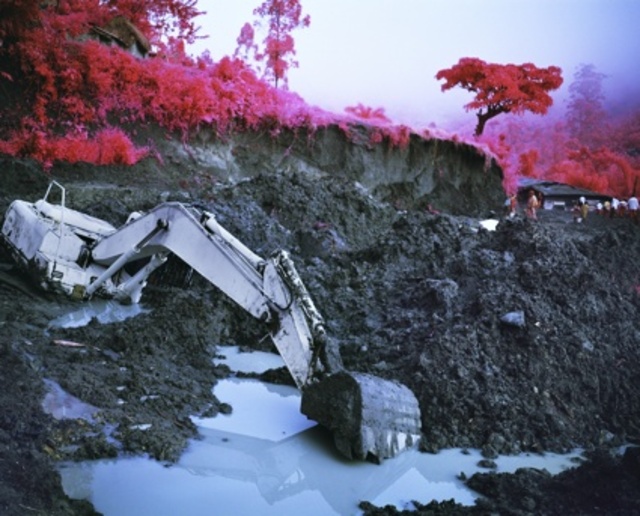

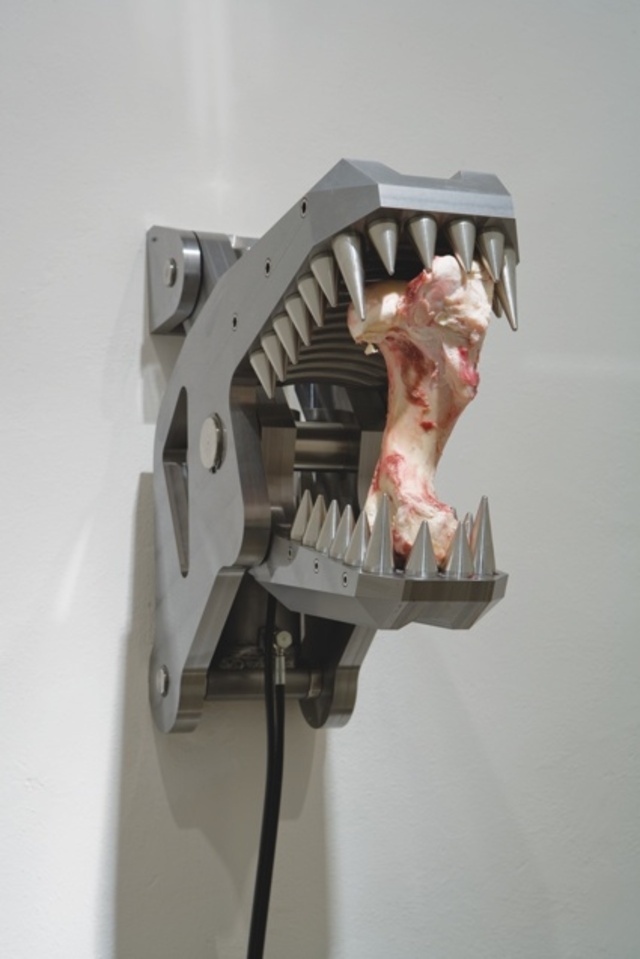
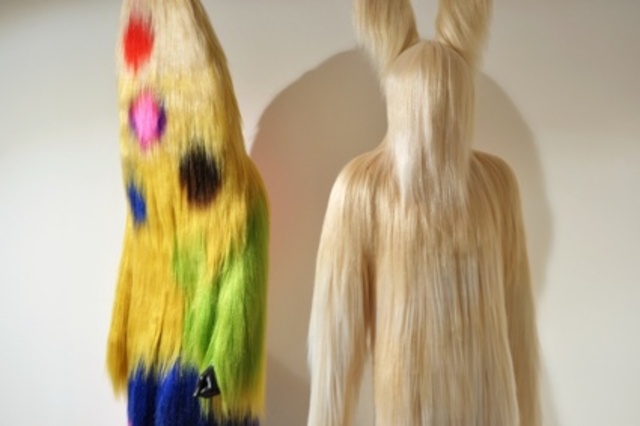
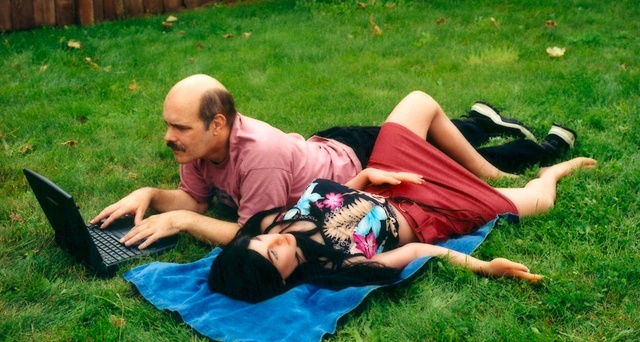
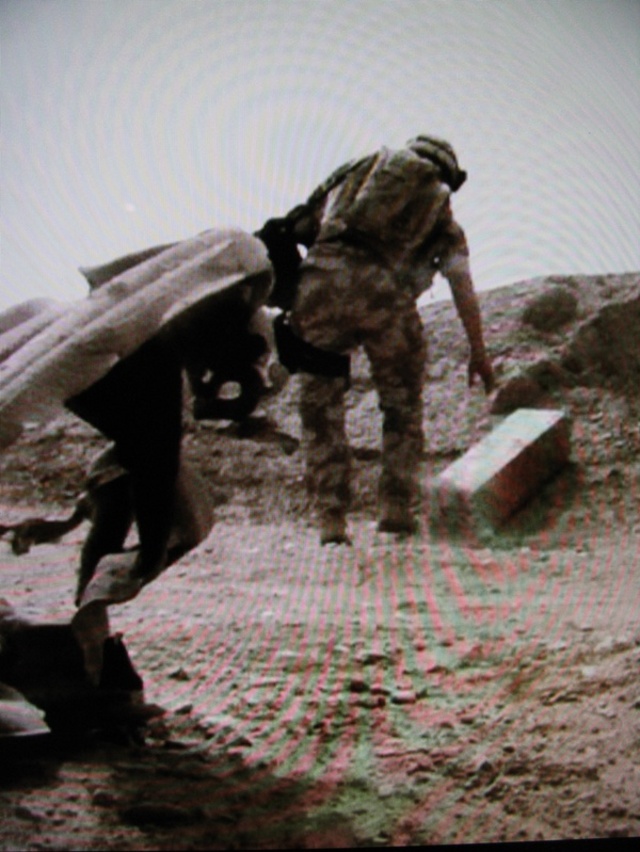
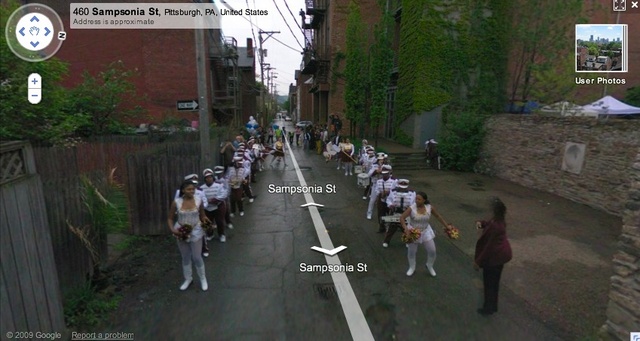
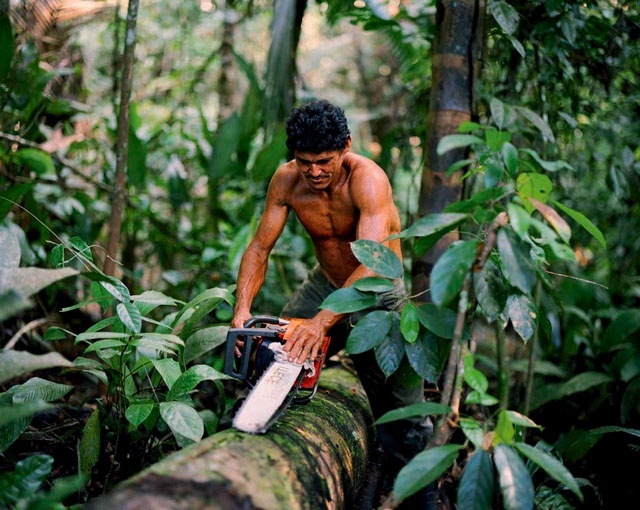


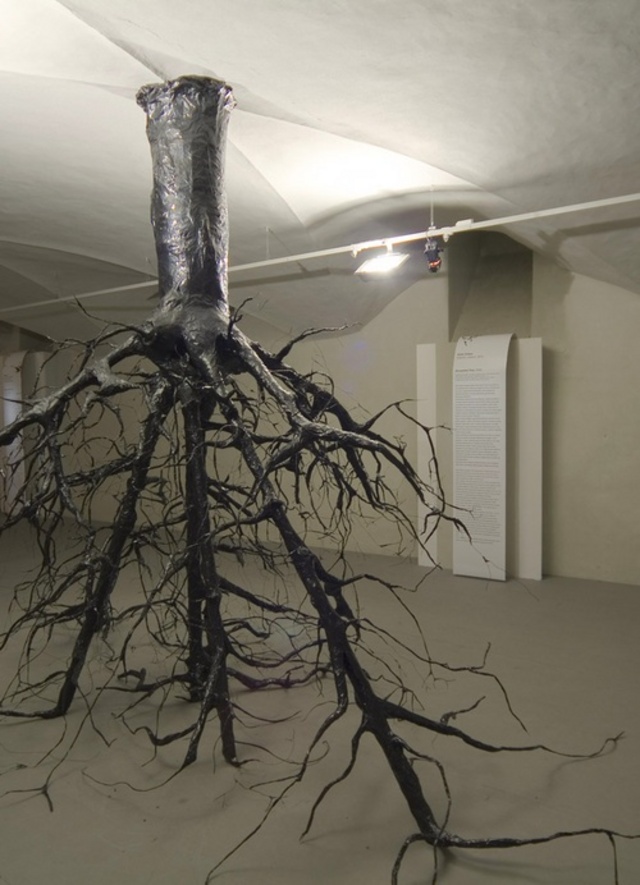
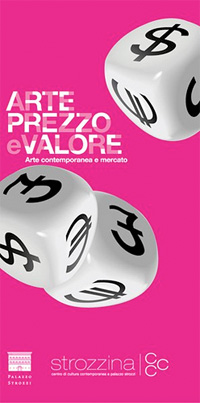 ART, PRICE AND VALUE – Contemporary Art and the Market (Part 1). The exhibition, which closed a few days ago at Strozzina – CCCS in Florence, investigated the increased links between contemporary art and the international market.
ART, PRICE AND VALUE – Contemporary Art and the Market (Part 1). The exhibition, which closed a few days ago at Strozzina – CCCS in Florence, investigated the increased links between contemporary art and the international market.
The contemporary art world has experienced transformations over the past few decades, it attracted attention and investors and turned into a non-stop party. But time has come for hangovers: collectors and sponsors’ enthusiasm has been shattered by the economic downturn. Speculations about what the new situation will entail are raging all over the contemporary art community.
An idea that pervades the various forecasts and analysis is that if the global financial crisis changes the rules and the players, it might also bring some positive corollaries. As the art critic Robert Hughes has argued, the appreciation of art has become too tainted by its association with bloated values (via). The crisis might force the contemporary art world to find alternatives to a money-centered situation which had blown out of proportion, invent new survival strategies and readjust the way we value art. I quite like this extract of an essay that Manuel Borja-Villel, Director of the Museo Nacional Centro de Arte Reina Sofía in Madrid wrote for El Pais: We didn’t realize that this creativity and radicality had become labels for consumption. We must reflect on where we are, what we want and where we are going and ask ourselves whether what we are looking for is an art that contributes to the public space, or on the opposite, whether what we are interested in is to create a new label to show off in parties.
Some would even add that there’s nothing better than a dire financial context to stimulate art and see new avant-gardes emerge. Maybe but i still hate the idea that artists have to suffer, drink their despair in absinthe and cut their ear in order to gain talent and respect.
Enough of my two-pence on the subject. Let’s get back to the exhibition with a couple of artworks:
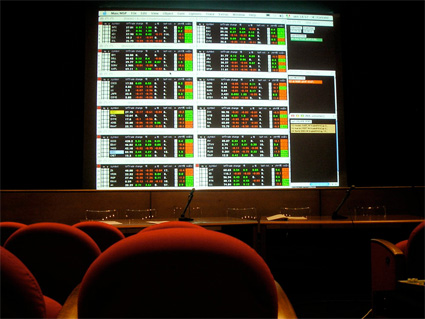
Fabio Cifariello Ciardi, a BID match, 2008, video site specific, courtesy the artist
Fabio Cifariello Ciardi‘s A BID Match is based NASDAQ Voices, an audiovisual installation that turns real time trading data over any day of trading on the NASDAQ Stock Market into sound compositions. A BID Match maps the performance of the share price of Sotheby’s and of the New York Stock Exchange. The term BID refers both to the bidding process at an auction and to the abbreviation BID for Sotheby’s at the New York Stock Exchange. The time span monitored was 15 September 2008, the first day of the auction of Damien Hirst at Sotheby’s. Surprisingly immune from any preoccupation about the financial markets that were crashing that very week, the auction outperformed the expectations of Sotheby’s.
Just pasting below a BBC report on the auction. In almost 2 minutes and 30 seconds they manage to repeat over and again words that relate to money but never comment on the artistic qualities of the work:
Pablo Helguera‘s Manual of Contemporary Art Style is a witty book that scrutinize the inner social workings of the contemporary art scene, and guides the readers through the the do’s and don’t of life in and around the art community.
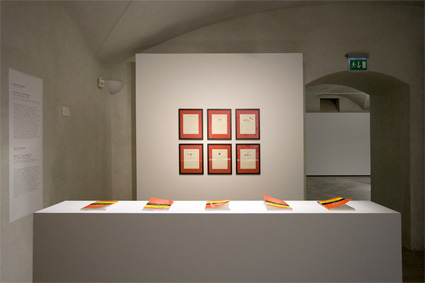
Manual of Contemporary Art Style Tips, 2007 (view of the exhibition room)
The Manual gives answers essential questions such as: Should one sleep with an artist whose work one does not like? How can one escape from a never-ending video installation while in the presence of others? How to cure the “festivalist syndrome”? How to use google as a curatorial tool? I’m going to order the book just for this other question: What should one say to close friends when they exhibit bad work?
You think that as a mere gallery visitor you are an outsider who doesn’t have to abide by the rules? Big mistake. You have duties and must adopt an adequate behaviour. Even the perfume you are wearing must show some respect to the art space.
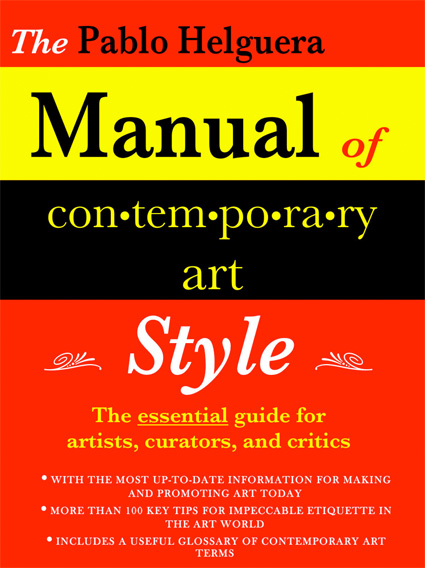
Manual of Contemporary Art Style Tips, 2007
I had a quick look through it. Despite its almost comical purpose and style, the book is shock full of recommendations that have more sense than folly. I kept catching myself thinking “That’s exactly like that!” Chapter after chapter, Helguera paints a portrait of a contemporary art scene constantly swaying between the need to cultivate an image of avant-guarde and non-conformism and the necessity to please the conservative art market that sustains them financially.
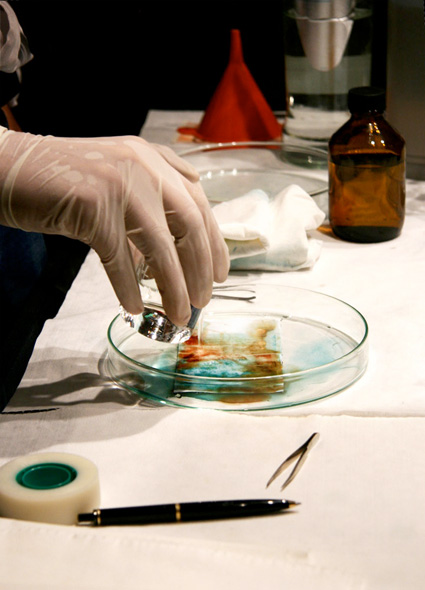
Untitled, 2008. Produced by CCCS, Florence and Galleria Franco Soffiantino, Turin
What turns an object into art? Where are the analogies between money and art? For the exhibition at the CCCS in Florence Cesare Pietroiusti covered a wall with 3000 one- and five-dollar bills previously treated with sulphuric acid and stamped on their back side. While it had lost its worth as a currency, each banknote had acquired the status of a unique work of art. The visitors were invited to take one of the bills, on the back side of which the following warning was stamped: “each monetary transaction involving this artwork will invalidate the signature of its author and consequently transform it into a fake”.
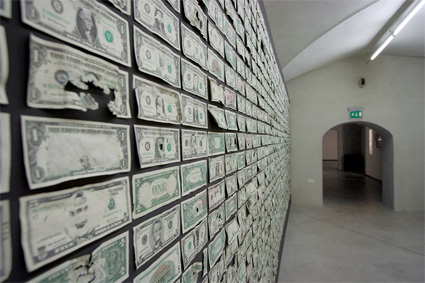
Untitled, 2008. Produced by CCCS, Florence and Galleria Franco Soffiantino, Turin
By inviting the audience to actively take part in this process in which Pietroiusti is preventing the individual artwork to be converted into money. Art becomes a non-monetary gift. The artist thereby undermines the logic of the art market which thrives on the idea that a work of art in not only a commodity saleable at a certain price, but that it may even generate a profit. By excluding the characteristics of an artwork as a convertible currency, he is revealing and removing one of the fundamentals of the art market.
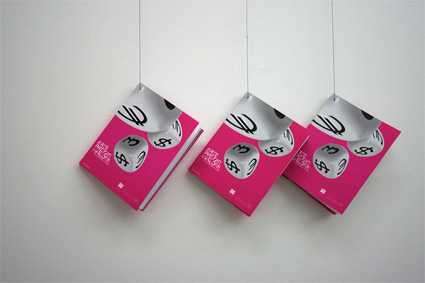
Untitled, 2008. Produced by CCCS, Florence and Galleria Franco Soffiantino, Turin
The exhibition closed a few days ago but you can explore its theme further in the catalog published in both english and italian.
All images Strozzina – CCCS.
Quick notes about ART, PRICE AND VALUE – Contemporary Art and the Market which closed a couple of days ago at the Strozzina – CCCS center in Florence.
Artists’ take on money and the art market are almost inevitably tongue in cheek but Christian Jankowski‘s video Kunstmarkt TV is by far the most hilarious approach on the art market i’ve ever seen.
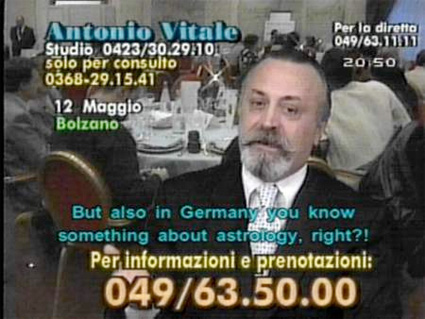
Christian Jankowski, Still from Telemistica, 1999
Jankowski’s work betrays a fascination with visual entertainment media. He gained fame in 1999 with his contribution to the 1999 Biennale in Venice: Telemistica. In a very approximative italian, the artist phoned five different fortune-tellers on the Italian television to inquire about his success at the art biennial. Caught a bit off-guard by the unusual demand, the TV-predictors try their best to ensure that his work would meet with a resounding success.
The psychics’ televised sub-titled answers became the work itself.
The CCCS was showing two of his other videos: Point of Sale a threefold screen which puts side by side a gallery-owner selling art and a retailer selling electronics describing the business strategies, financial goals and client structures of the other one, while a business consultant comments on the rules of successful business.
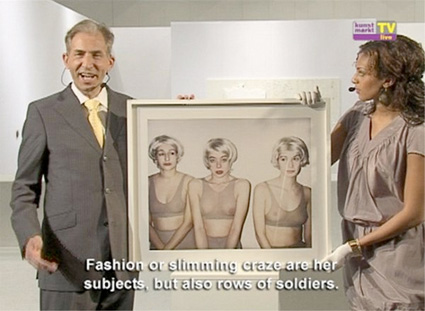
Christian Jankowski, Kunstmarkt TV, 2008, DVD 45 min, courtesy the artist, Gallerie Klosterfelde, Berlin
The second video, Kunstmarkt TV, is basically a home shopping channel for contemporary art.
While his sexy young assistant is all sparkling eyes and grace, the presenter is busy applying his brightest smile and ‘value for money’ tactic to a series of contemporary art works. To give him credit, the guy does seem to have done a bit of research beforehand but that doesn’t really prevent him from describing the merits of pieces by Vanessa Beecroft, Noshitomo Nara, Raymond Pettibon or Jeff Koons as if they were juice extractors and slimming creams. He justifies the price of each item not only by explaining the career and notoriety of each artist but he also enthusiastically points at details such as the quality of the frame and the simplicity to nail the ‘item’ to your wall. The show was streamed on the internet and anyone interested in purchasing the goods could call and get their hands on the artwork of their choice.
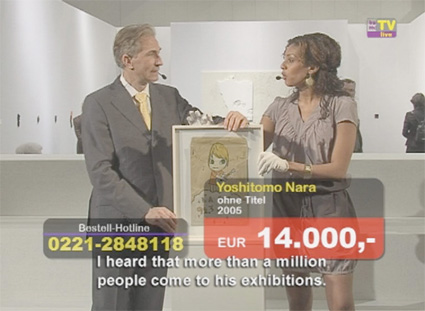
Christian Jankowski, Kunstmarkt TV, 2008, DVD 45 min, courtesy the artist, Gallerie Klosterfelde, Berlin
More to come.
On a sunny afternoon in Florence i visited one of those exhibitions which lingers in your mind for days because of the questions and debates they set in motion inside your brain. The theme of the Art, Price and Value was selected a long time ago but given the current frenzy about the state of the art market it could not have been more timely nor thought-provoking. The exhibition, which closed a few days ago at the Strozzina cultural Center, explored how the economy has come to manipulate art production, affecting its every aspects.
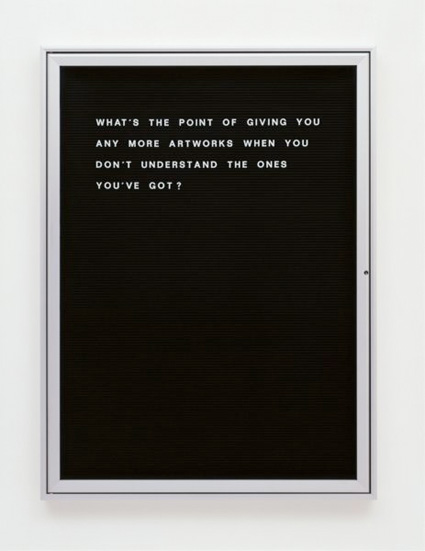
Bethan Huws, Untitled, 2006, alluminio, vetro, lettere in gomma e plastica, courtesy the artist
Contemporary art plays an increasingly prominent role in our culture, with some of its most visible figures reaching a status that can only be compared to the one of fashion designers, Hollywood actors and pop stars. Many people have come to associate contemporary art with tactics made of shock, awe and circus. The economic power of art is reflected in the spectacular prices obtained at international auctions, the increasing number of museums accused of ‘blockbusteritis‘, biennials becoming as necessary to the tiniest country as a local airport, festivals popping up everywhere (just how many media art festivals are there in The Netherlands exactly?), star-stud openings and mega-happenings.
The exhibition at the CCCS features the work of contemporary artists which throws light on the mechanisms of the international art system. The selection explores different points of view, ranging from complete conformity to the prevailing rules of the market, to irony and sarcasm and even to an “anti-market” stance, taken by those anxious to avoid the commercial aspects of the art market entirely.
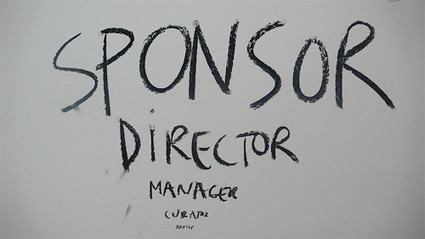
Dan Perjovschi
Dan Perjovschi whose work i’ve seen in almost every single European city i visited last year was invited to cover the walls on one of the exhibition rooms with some of his ‘site-specific and time-specific’ comic strip style drawings. Incisive and spot-on, the drawings sharply sum up current political, ethical or cultural issues. For the CCCS exhibition, the artist’s charcoal sketches comment on the paradoxes and absurdities of the contemporary art system.
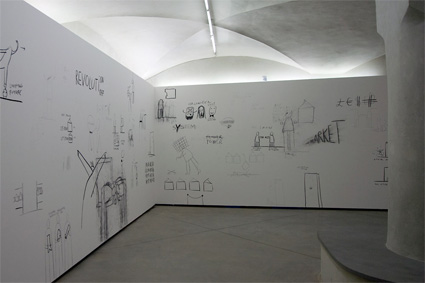
Dan Perjovschi, 2008. Image CCCS
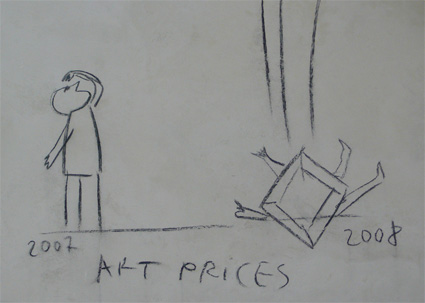
Dan Perjovschi, 2008
When engaging with the issue of art and money, it is impossible to ignore the two most successful money-milkers of the moment: Takashi Murakami and Damien Hirst. I’ll pass briefly over these two as i doubt they need much introduction.
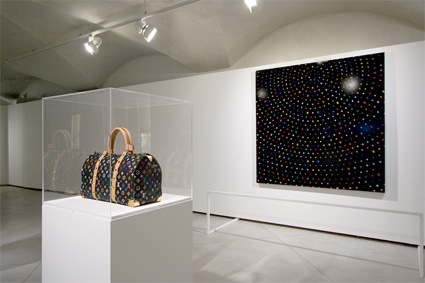
Takashi Murakami, Sphere Monogram (Black), 2003
Just like he did notoriously and controversially a few months ago at the Brooklyn Museum, Murakami exhibited the bags he designed for Louis Vuitton in the gallery (though there was no shop to sell the accessories this time.) Further blurring the frontiers one could make between fine art and commercial goods, he had a black canvas covered with the multicoloured letters L and V and other symbols associated with the famous monogram.
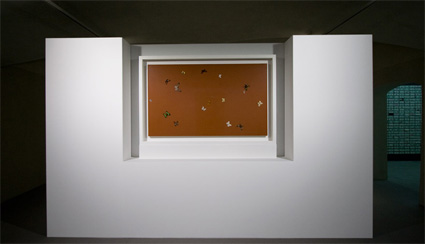
A Lovely Day, 1997-1998. Courtesy private collection. photo © Damien Hirst. All rights reserved. DACS 2008
No one better than Damien Hirst has managed to reduce to tiniest bits of dust the romantic myth of the ‘artiste maudit’. While art experts were claiming that the party was over and that the art market would soon feel the effects of the global financial turmoil, Hirst was merrily enjoying a two-day auction at Sotheby’s where his works smashed top estimates and reached a total of $198 million. Some critiques are nevertheless predicting that the Hirst hype might soon deflate.
The Florence exhibition had two of his most iconic pieces: the first one is part of a long series of canvases and other objects featuring butterflies -metaphor for mortality, a theme that Hirst has explored widely- mounted on a glossy surface and manufactured by Hirst’ team of assistants. This type of art production can be traced back to the workshops of Renaissance artists such as Sandro Botticelli and to the factory of Andy Warhol with whom the British artist shares an acute understanding of the market mechanisms.
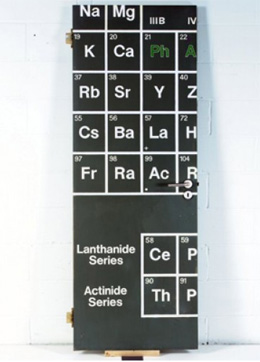 Grey Periodic Table Door, 1997-1998 from The Pharmacy restaurant, London © Damien Hirst & Other Criteria
Grey Periodic Table Door, 1997-1998 from The Pharmacy restaurant, London © Damien Hirst & Other Criteria
The second piece on show was a door which had been part of the entrance of the restaurant The Pharmacy which Damien Hirst co-owned in the late 1990s in London. When the place closed in 2003, its interior -from a sculpture of Hirst’s own DNA helix to rolls of wallpaper- was sold at auction at Sotheby’s. Every single object was sold for a multiple sum of the estimated auction price. Many of these items were not unique works of art, but industrially produced goods. The fact the they had been part of a project associated with the brand name of Damien Hirst turned these objects into highly coveted artefacts.
Hirst is one of The Young British Artists (YBAs). So is Michael Landy. Yet, they have adopted strikingly opposite strategies when it comes to money and art.
Back in 2001, Landy stunned the mainstream press with his performance/installation Break Down. The artist, dressed in blue boiler suit, systematically cataloged and pulverized all his belongings including his birth certificate, all his books and works of art, his car and driving license. Not even the most cherished souvenirs, from a childhood teddy bear to a sheepskin coat that belonged to his father, could escape the grinder.
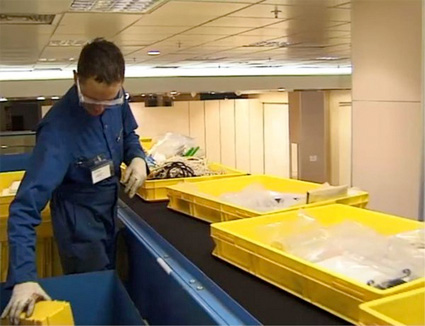
Michael Landy, Break Down, 2002, still from video documentary, 16.36 min
The video on show at CCCS documents the operation: in a vacant shop space located on the always shopping-busy Oxford Street in London every single item is placed on a conveyor belt and transported to its final destruction in a grinder.

Michael Landy, Breakdown. Photo credit – Hugo Glendinning © Commissioned and produced by Artangel, 2001
The performance didn’t even have any commercial value: Landy refused to have the bags of rubbish left from the process sold or exhibited in any form. He made no money as a direct result of Break Down, and following it had no possessions at all. A BBC documentary followed the artist as he had to rebuild his material life.
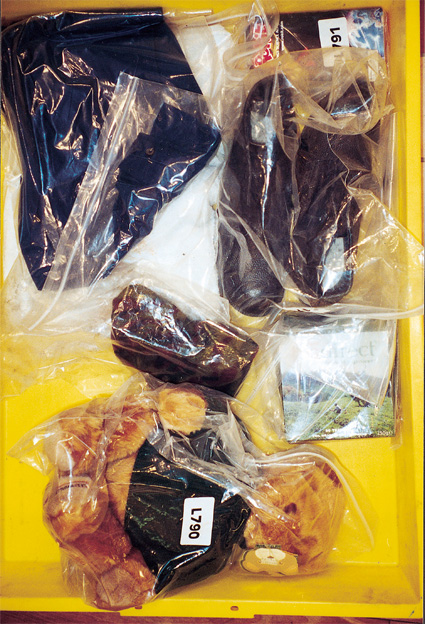
Breakdown. Photo credit – James Lingwood © Commissioned and produced by Artangel, 2001
The works puts a distressing human element onto the much-criticized but eagerly embraced consumer society. Should the objects ones owns be the sole factor that determine who an individual is? What happens to one’s identity when all theses objects have been annihilated?
To be continued…
Previously at CCCS-Strozzina: Emotional Systems, at the Strozzina in Florence, China China China China !!! Chinese contemporary art beyond the global market, Exploded Views – Remapping Firenze.